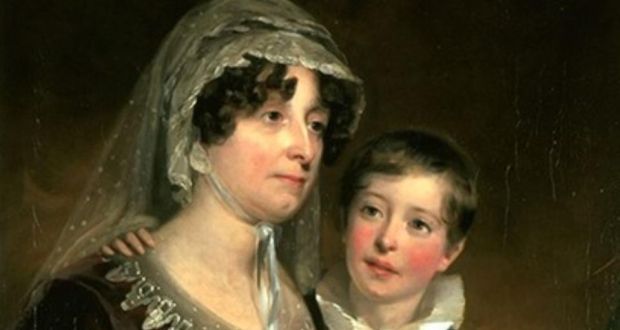
Carolina Oliphant 1766-1845
Carolina Oliphant was born into the Oliphant family of Gask in 1766. She was the daughter of Laurence Oliphant, 7th Laird of Gask and Margaret Robertson, daughter of Duncan Robertson of Struan, Chief of the Robertsons. Both staunch Jacobite families, her father Laurence the 7th Laird of Gask and both grandfathers (Duncan Robertson, and Laurence, 6th Laird of Gask) fought at Culloden, and were exiled for a period of time in France. Luckily for Carolina (who was named after Bonnie Prince Charlie,) her father was a progressive thinker for his time, and not only allowed but encouraged his daughters’ education. Carolina had 3 sisters and two brothers.
During her early years, she was very pretty, being known as the Flower of Strathearn and was quite fond dancing. She encountered the famous fiddler Neil Gow and there got her first taste of the traditional Scottish music to which she set many of her songs, including “The Laird o’ the Cockpen” and “The Pleughman”. She composed and preformed Jacobite songs for her ailing father Laurence and uncle Duncan. The songs greatly impressed the two and soothed their spirits which were forever damaged after the Scots’ defeat at Culloden.
At the age of 41, Carolina married her second cousin Major William Murray Nairn, who was also of a Jacobite family, who didn’t regain his families estates until 1824. It is said that George IV was encouraged to restore the Jacobite estates and titles seized after Culloden, not only by the petitioning of Sir Walter Scott, but also by Carolina’s songs of lament. At this time, Carolina and William were named Baron and Baroness of Nairn. Carolina continued to write poetry secretly (as it was still hardly accepted for a woman to engaged in such a learned activity,) keeping it even from her husband and publishing under the pen name Mrs. Bogan of Bogan.
After Williams death in 1830, Carolina left Edinburgh with her son and great niece and travelled extensively around Europe, first to Ireland and Bristol and then to the Continent. Her son died in Brussels in 1837 and, after pleadings from the family at Gask, she returned home only a few years before her death in 1845. She was buried in the new chapel, which had just been completed only days before.
After Carolina’s death, her sister published a collection of 87 peices of poetry, finally under the name of Carolina Oliphant, called the Lays of Strathearn. Carolina’s most famous songs include “Charlie Is My Darling”, “Will Ye No Come Back Again” and “Bonnie Gascon Ha.” Carolina has made an undeniable contribution to Scotland as well as to her heritage and has been credited, along with Robbie Burns, as being one of the main preservers of the culture deliberately limited after Culloden by the English. Although her songs are widely known and sung today in Scotland, few are familiar with Lady Nairn’s contributions to Scotland’s musical culture (partly because much of her work has been attributed to Scotland’s other great poets, including Burns, Hogg, and Scott.)







